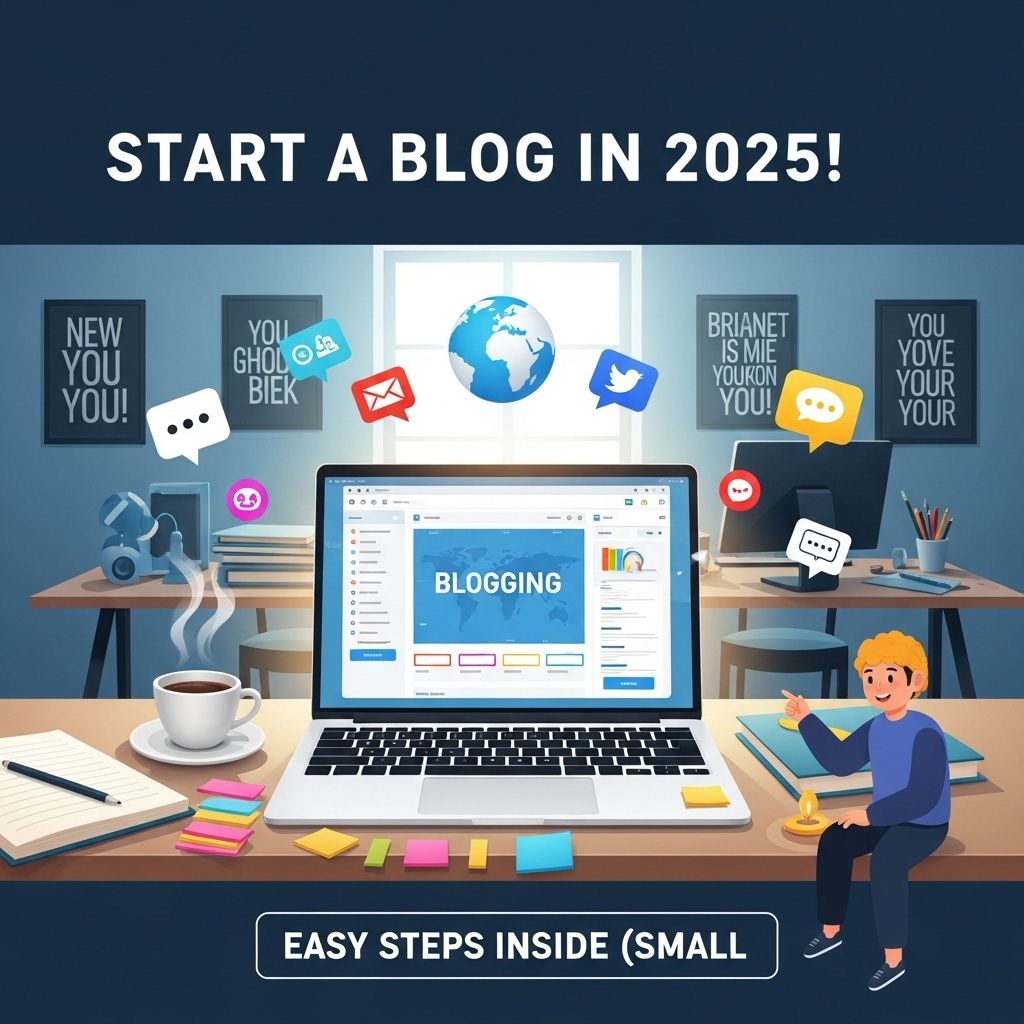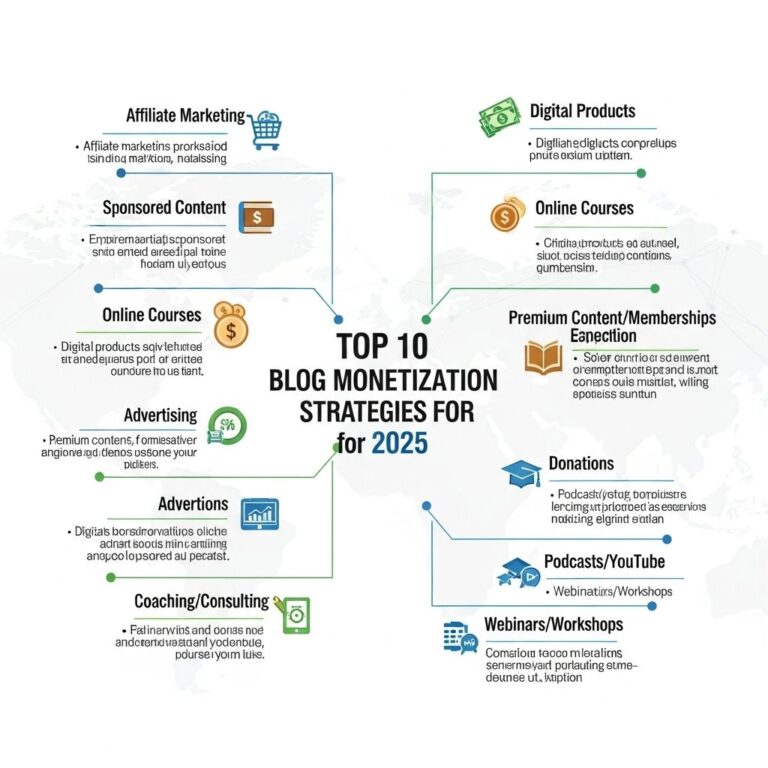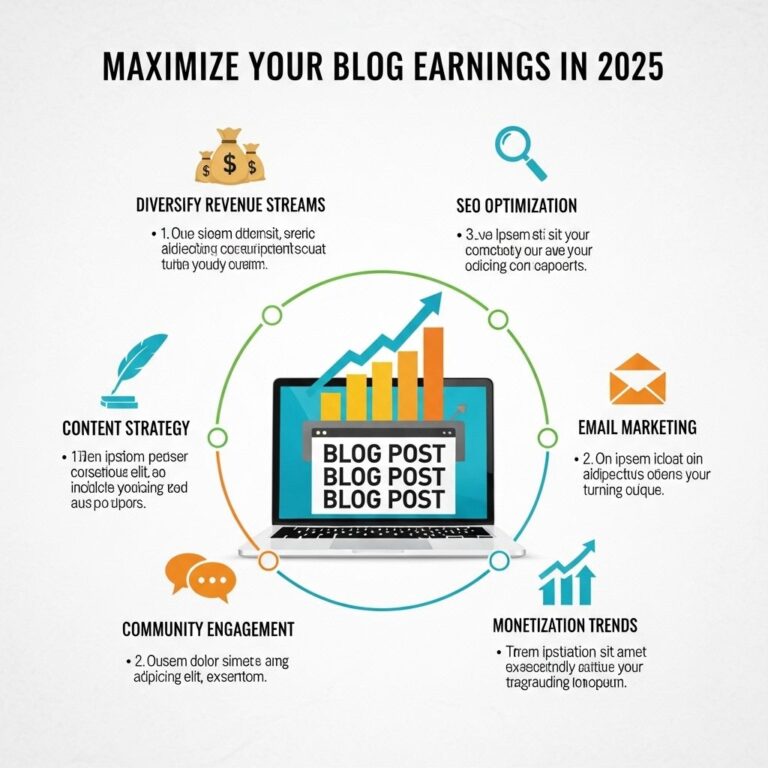In the digital era, blogging has evolved from a simple hobby to a lucrative and influential medium for sharing ideas, building brands, and connecting with communities. With 2025 approaching, aspiring bloggers have a wealth of opportunities at their fingertips. Whether you’re looking to share your personal experiences, offer professional insights, or create a platform for your business, starting a blog in 2025 involves understanding the latest trends, technologies, and best practices. This article will guide you through the essential steps to launch a successful blog in the upcoming year.
Table of Contents
Understanding Your Purpose and Niche
Before diving into the technical aspects of starting a blog, it’s crucial to define your purpose. Knowing why you want to start a blog will help shape its content and design.
Defining Your Goals
Your blogging goals could include:
- Sharing knowledge and expertise in a specific field
- Building an online community or a personal brand
- Generating income through affiliate marketing or ads
- Documenting personal experiences and traveling adventures
- Educating others about a particular subject
Selecting Your Niche
A well-defined niche helps you stand out in a crowded market. Consider the following while selecting a niche:
- Identify your passions and expertise.
- Research current trends to find gaps in existing content.
- Evaluate the competitive landscape.
- Test the market demand through social media and forums.
Choosing the Right Blogging Platform
With numerous blogging platforms available, selecting the right one is crucial for your blog’s success. Here are some popular options you might consider:
| Platform | Pros | Cons |
|---|---|---|
| WordPress.org | Highly customizable, full control, large community support | Requires hosting, steeper learning curve |
| Wix | User-friendly, drag and drop interface, free plan available | Limited customization compared to WordPress |
| Blogger | Easy to set up, Google integration | Limited features and design options |
| Medium | Built-in audience, simple writing interface | No customization, limited monetization options |
Setting Up Your Blog
Once you’ve chosen a platform, it’s time to set up your blog. This process varies depending on the platform, but generally includes the following steps:
1. Choose a Domain Name
Your domain name is your blog’s address on the web. Choose a name that is:
- Memorable
- Short and easy to spell
- Reflective of your content
2. Secure Hosting
If you chose WordPress.org, you’ll need a hosting provider. Some popular choices include:
- Bluehost
- SiteGround
- HostGator
3. Install Your Blogging Software
For WordPress, most hosting providers offer a one-click installation process. Follow the prompts to complete the setup.
Designing Your Blog
The design of your blog is crucial for creating a great user experience. Here are some tips to consider:
Choosing a Theme
Select a theme that is:
- Responsive (mobile-friendly)
- Visually appealing
- Easy to navigate
Customizing Your Blog
Use customizable features to reflect your personality and brand. Consider:
- Color schemes
- Typography
- Images and logos
Creating Quality Content
Content is the heart of your blog. To attract readers and keep them engaged, focus on producing high-quality posts.
Understanding Your Audience
Get to know your target audience’s interests and needs. Utilize tools like:
- Google Analytics
- Social media insights
Crafting Compelling Posts
When writing blog posts, consider the following structure:
- Engaging introduction
- Clear and informative body
- Actionable conclusion
SEO Best Practices
Search Engine Optimization (SEO) is essential for increasing your blog’s visibility. Here are key practices:
- Use relevant keywords throughout your content
- Optimize meta descriptions and titles
- Use alt text for images
Promoting Your Blog
Creating great content is just one part of the equation; promoting it effectively ensures that it reaches the right audience.
Utilizing Social Media
Social media platforms can drive traffic to your blog. Focus on:
- Identifying the platforms your audience uses (Facebook, Instagram, Twitter, etc.)
- Creating engaging posts that link back to your blog
- Participating in relevant groups and discussions
Networking with Other Bloggers
Building relationships with other bloggers can lead to collaborations and increased visibility. Consider:
- Guest posting on each other’s blogs
- Participating in blogging forums
- Sharing each other’s content
Monetizing Your Blog
If you’re looking to turn your blog into a source of income, consider the following monetization strategies:
- Affiliate Marketing
- Sponsored Posts
- Online Courses and Ebooks
- Ad Placement
Tracking Your Success
Use analytics tools to measure your blog’s performance. Key metrics to monitor include:
- Traffic sources
- User engagement
- Conversion rates for monetization efforts
Staying Updated with Trends
The blogging landscape is ever-evolving. To remain relevant, keep an eye on emerging trends:
- Video content integration
- AI-assisted writing tools
- Voice search optimization
Conclusion
Starting a blog in 2025 offers exciting prospects for creativity and income generation. By understanding your audience, producing quality content, and leveraging modern trends and technologies, you can carve out your space in the blogosphere. Embrace the journey and the possibilities that come with it!
FAQ
How do I start a blog in 2025?
To start a blog in 2025, choose a niche, select a blogging platform, purchase a domain name, set up hosting, and create engaging content.
What blogging platforms are recommended for beginners in 2025?
Some recommended blogging platforms for beginners in 2025 include WordPress, Wix, and Squarespace, each offering user-friendly interfaces and customizable templates.
How can I monetize my blog in 2025?
You can monetize your blog in 2025 through affiliate marketing, sponsored posts, selling digital products, or offering online courses.
What are the best practices for SEO in blogging in 2025?
Best practices for SEO in blogging in 2025 include optimizing your content for relevant keywords, using engaging meta descriptions, and ensuring your site is mobile-friendly.
How often should I post on my blog in 2025?
In 2025, it’s recommended to post consistently, whether that’s weekly or bi-weekly, to keep your audience engaged and improve your SEO rankings.









